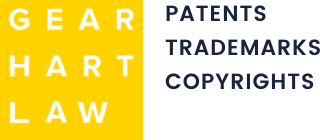Aerospace and aviation technology continues to evolve at a rapid pace. From next-generation aircraft to advanced drone systems and space vehicles, inventors in this field are constantly pushing boundaries. But without the right protection, those innovations can be at risk.
If you’re working on something new in aerospace or aviation, filing for a patent can help secure your competitive edge. Whether you’re an individual inventor or part of a company’s R&D team, we’ll walk you through what qualifies for a patent and how to handle some of the unique challenges in this sector.
What Counts as a Patentable Innovation in Aerospace?
To qualify for a patent, your invention must be new, useful, and not obvious to others in the field. That standard may sound simple, but it takes careful consideration to determine whether an idea will meet the requirements.
In the aerospace industry, common types of patentable innovations include:
- Flight control systems or avionics software
- Satellite components or launch mechanisms
- Jet engine modifications
- Structural materials designed for high-speed or high-altitude environments
- Autonomous navigation features in UAVs or drones
These inventions can involve hardware, software, or a combination of both. Even minor improvements to existing technology may be eligible, as long as they represent a meaningful technical advance. It’s important to move quickly, though. In most cases, your rights can be limited if your invention has already been publicly disclosed.
Challenges Unique to the Aerospace Sector
The aerospace field presents some specific hurdles when it comes to patent protection. One of the most common involves ownership. Many innovations are developed through partnerships between private companies and government agencies or as part of complex contractor arrangements. That can lead to questions about who owns the rights and who can file.
In addition, some aerospace technologies fall under U.S. export control laws. If your invention could be used in a military setting, for example, it may be regulated by ITAR (International Traffic in Arms Regulations) or EAR (Export Administration Regulations). This can affect how and where you file a patent.
Timing can also be tricky. Industry professionals often present their work at conferences or demonstrations. But public disclosure, even with a small audience, can limit your ability to seek patent protection if you wait too long. Working with a patent attorney early can help prevent missteps.
Filing Strategies That Work
There are several ways to approach the patent process in aerospace and aviation. In many cases, it makes sense to start with a provisional patent application. This option allows you to secure a filing date while giving you more time to refine your invention before submitting a formal application.
Other helpful strategies include:
- Maintaining detailed design and development records
- Identifying the broader system your invention fits into
- Confirming intellectual property agreements with collaborators
- Filing internationally if you plan to work with foreign partners or suppliers
These steps help build a strong foundation for your patent and can save time later in the process.
Why Patent Protection Matters in This Field
Aerospace and aviation innovations often require years of testing and development. They can also involve significant funding, licensing agreements, and business partnerships. Without a patent, your invention could be used by others without your permission.
Patent protection helps you:
- Secure exclusive rights to your innovation
- Add value to your company or startup
- Support funding efforts and investor confidence
- Take legal action if someone copies your invention
In a competitive industry, patents aren’t just a legal tool—they’re a business asset. They give you control over how your ideas are used and can play a significant role in shaping your long-term success.
How Gearhart Law Can Help
At Gearhart Law, we’ve worked with inventors across a range of industries, including aerospace and high-tech engineering. We understand the practical and legal challenges that come with protecting complex technology.
We’ll help you assess the patentability of your invention, prepare and file your application, and explore both U.S. and international protection options. If you’re working with a team or under contract, we’ll also review agreements to make sure your rights are clearly defined.
Contact Our Experienced New Jersey Aerospace & Aviation Patents Attorneys
Ready to take the next step? We’re here to help you secure the patent protection you need to move forward with confidence.
Contact Gearhart Law today to schedule a consultation and learn how we can assist with your aerospace or aviation patent. Your ideas matter—let’s keep them protected.
